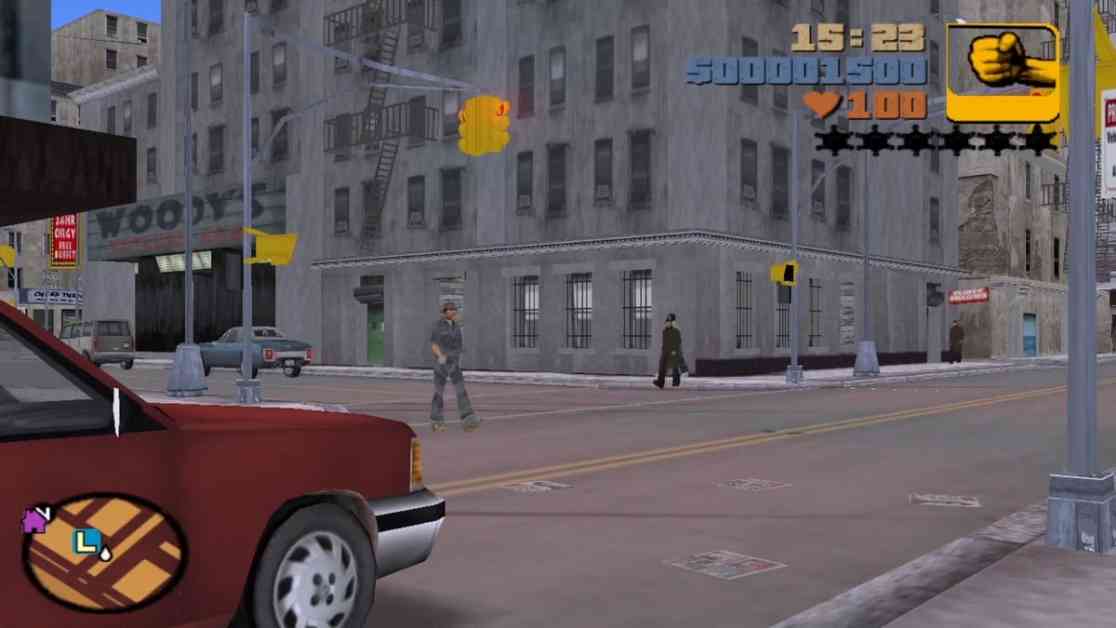The Evolution of Environmental Design in GTA Games: A Rockstar Developer’s Insights
In the world of video games, attention to detail can make all the difference in creating an immersive and believable gaming experience. One such detail that has fascinated players for years is the environmental design in the Grand Theft Auto (GTA) series, particularly in the earlier games like GTA 3 and Vice City. These games were known for their bustling cities filled with trash and debris that added a sense of realism to the virtual world.
As players roamed the streets of Liberty City and Vice City, they would often encounter flying trash and debris that slid around the sidewalks and streets. This seemingly minor detail may have gone unnoticed by some, but for others, it added to the overall atmosphere of the game, making the cities feel lived-in and authentic. The trash and debris in these games were not just random objects thrown in for visual effect; they were carefully designed elements that enhanced the player’s experience.
One of the key developers responsible for implementing the trash and debris system in GTA 3 and Vice City was Obbe Vermeij, a former Rockstar North developer. In a recent tweet, Vermeij shed light on how the system worked and why it was eventually removed in later games like GTA: San Andreas. According to Vermeij, the decision to add litter to the streets of GTA 3 was made to address the issue of the digital streets looking “too clean.” He explained that the trash in GTA 3 was represented by a single rectangle that moved occasionally with the wind and could be dragged along by passing cars.
The attention to detail didn’t stop there. The artists created four textures for the trash, including two newspapers and two leaves, adding variety to the debris scattered around the city. In Vice City, a small change was made to the system after players completed a specific mission involving dropping flyers from a plane. One of the four textures was replaced with these flyers, showcasing the developers’ commitment to adding subtle details that enhanced the game world.
However, when GTA: San Andreas was released in 2004, players noticed the absence of the flying trash and debris that had become a trademark of the earlier games. Vermeij revealed that the decision to remove the trash in San Andreas was due to not everyone on the development team liking the litter. He mentioned that he eventually lost the argument to keep the debris in the game, leading to its removal. This decision left some players wondering why the iconic feature had been omitted from the latest installment in the series.
Interestingly, despite the absence of trash in San Andreas, the environmental design element made a return in another controversial Rockstar game, Manhunt. Developed by Rockstar North and released in 2003, Manhunt focused on stealth gameplay and murder, creating a dark and gritty atmosphere for players to navigate. Vermeij explained that some GTA developers had assisted during the last months of Manhunt’s development, and he took the opportunity to add back in the “litter code” from GTA 3 to enhance the game’s environmental design.
The inclusion of the trash and debris system in Manhunt highlighted the importance of environmental design in creating a cohesive and immersive gaming experience. While some may have viewed the flying trash as a minor detail, its presence added to the overall atmosphere of the game world, making it feel more realistic and engaging for players. The decision to incorporate this feature in Manhunt showcased the dedication of the developers to creating rich and detailed game worlds that captivate the player’s imagination.
In conclusion, the evolution of environmental design in GTA games, as revealed by a Rockstar developer, offers valuable insights into the thought process and attention to detail that goes into creating immersive gaming experiences. The inclusion of flying trash and debris in earlier games like GTA 3 and Vice City added a layer of authenticity to the virtual cities, making them feel alive and dynamic. While the decision to remove this feature in later games like San Andreas may have disappointed some players, its inclusion in games like Manhunt demonstrates the impact of environmental design on shaping the player’s experience. As gamers continue to explore virtual worlds, the importance of environmental design in creating immersive and engaging gameplay experiences cannot be understated.

